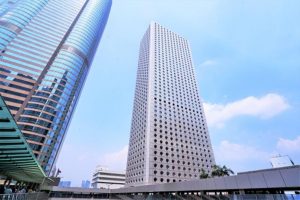HONG KONG— Cathay Pacific Airways Ltd., Asia’s largest international airline by passengers, reported profit that lagged analyst estimates as losses from fuel hedging masked gains in passenger numbers.
Hong Kong’s Cathay Pacific Airways Ltd said in a statement that its net profit rose 20 percent last year due to a recovery in a cargo business that it plans to expand to meet growing demand on long-haul routes. Profit reached HK$3.2 billion ($412.48 million) in 2014 on a 5.5 percent rise in revenue at HK$106 billion.
Cathay Pacific Airways Ltd.’s chairman said he was upbeat on the airline’s outlook for 2015 after the company posted a 20% rise in full-year net profit on lower fuel prices, strong passenger growth and a recovery in the air-cargo market.
“While we face growing competition in our passenger business, which makes it harder to maintain yield, overall demand remains strong and the outlook is positive,” Cathay Chairman John Slosar said, noting that the carrier will also benefit from the sharp reduction in fuel prices since the fourth quarter of last year.
The airline said its net profit for the 12 months ended Dec. 31, 2014 rose to 3.15 billion Hong Kong dollars (US$406 million) as compared to HK$2.62 billion in 2013.
“It was encouraging to see an overall improvement in our business in 2014. That improvement has continued in the first quarter of this year and we are positive about the overall prospects for 2015. Demand in our cargo business continues to improve and is currently being helped by the congestion in sea ports on the West Coast of the United States. We continue to benefit from the lower net fuel prices” Cathay Pacific Chairman John Slosar said.
The carrier, which also owns China-focused Hong Kong Dragon Airlines Ltd., recommended a final dividend of 26 Hong Kong cents, compared with a final dividend of 16 Hong Kong cents in the previous year.
“The fact that we won the World’s Best Airline award for the fourth time is clear recognition from air travellers worldwide of the work we have put into providing superior products and services. The Group’s financial position remains strong, which will enable us to continue with our long-term strategic investment in the business and our commitment to reinforcing Hong Kong’s position as one of the world’s premier aviation hubs” said John Slosar adding that efforts to make Cathay Pacific and Dragonair better airlines for customers continued.
In the first half of 2014 the group’s business was affected by high fuel prices, reduced passenger yield and continued weakness and over-capacity in the air cargo market. Business was better in the second half of the year.
For the full year, passenger demand was reasonably firm, with high demand during the peak summer and Christmas periods.
After a prolonged period of weakness, cargo demand started to improve in the summer of 2014 and was strong in the fourth quarter, which is the peak period for cargo.
The group’s business benefited from lower fuel prices in the fourth quarter, but this was partially offset by fuel hedging losses.
Passenger revenue for Cathay Pacific and Dragonair in 2014 increased by 5.4 per cent to HK$75,734 million compared to the previous year.
Capacity increased by 5.9 per cent as a result of the introduction of new routes (to Doha, Manchester and Newark) and increased frequencies on some existing routes.
Passenger demand was strong in all classes of travel on long-haul routes.
However, the increase in passenger numbers did not match the increase in capacity on North American routes.
The carrier’s heavy use of oil hedging has meant it has so far reaped limited benefit from lower fuel prices. In 2014 the carrier booked a fuel-hedging loss of HK$911 million, reversing a gain of HK$985 million in the previous year. Cathay had said it hedged about 57% of its estimated jet-fuel consumption in 2015 at an average price of US$99 per barrel. Fuel costs, which accounted for 39% of Cathay’s operating costs, rose 0.7% in 2014.
The Group continues to invest heavily in its fleet, taking delivery of 16 new aircraft in 2014: nine Boeing 777-300ER aircraft, five Airbus A330-300 aircraft and (for Dragonair) two Airbus A321-200 aircraft. Six Boeing 747-400 passenger aircraft were retired during the period.
In October 2014 a refreshed logo was introduced for Cathay Pacific as part of a new approach to design, to be seen on the airline’s website, in the new lounge at Haneda in Tokyo, and in the refurbished first class lounge in The Pier at Hong Kong International Airport, which will open in June 2015.
At 31st December 2014, new business and economy class seats had been installed in all Dragonair Airbus A330-300 and six A321-200 aircraft, and new first class seats had been installed in six Dragonair Airbus A330-300 aircraft. In November 2014 the installation of new business and economy class seats began in Dragonair’s Airbus A320-200 aircraft and is expected to be completed in 2018.
Australia and New Zealand Passenger Services
- The performance of Cathay Pacific Australian routes was satisfactory in 2014. Traffic between Mainland China and Australia was stable, despite competition from airlines flying non-stop.
- Business on the Sydney route was helped by the cancellation of a competitor’s services between Hong Kong and Sydney in May 2014. We began using Boeing 777-300ER aircraft on one of our Sydney flights in December 2014, so adding capacity on the route. In October 2015, we will add another Boeing 777-300ER aircraft to the route.
- Cathay Pacific reorganised certain services to Australia and now operate four-times-weekly direct flights to Adelaide, three-times-daily direct flights to Melbourne and a daily direct flight to Brisbane. There is also a tagged flight between Brisbane and Cairns, four times a week.
- The New Zealand route was robust in 2014, helped by the joint venture with Air New Zealand. Cathay Pacific increased the frequency of the Auckland service to twice-daily in the northern winter.




